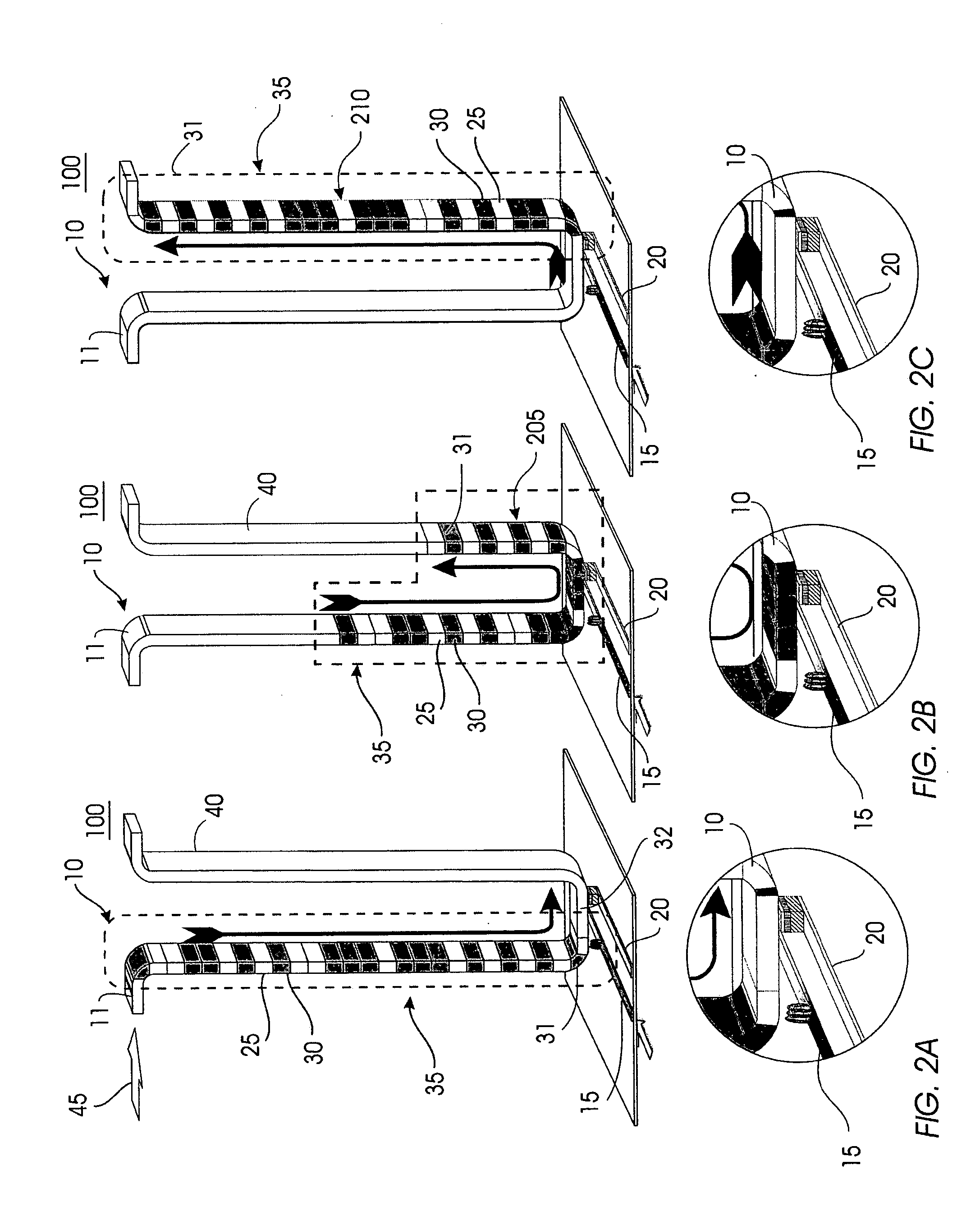Magnetic shift register with shiftable magnetic domains between two regions, and method of using the same
a magnetic domain and magnetic shift register technology, applied in the field of memory storage systems, can solve the problems of solid-state random access memories, devices with moving parts tend to wear out and fail, and the magnetic shift register can be varied, and achieve the effect of high cost of mechanical means, high reading cost, and high cost of magnetic shift registers
- Summary
- Abstract
- Description
- Claims
- Application Information
AI Technical Summary
Benefits of technology
Problems solved by technology
Method used
Image
Examples
Embodiment Construction
[0049]FIG. 1 (FIGS. 1A and 1B) illustrates an exemplary high-level architecture of a magnetic memory system 100 comprising a magnetic shift register 10 that utilizes a writing device (also referred to herein as writing element) 15 and a reading device (also referred to herein as reading element) 20. Both the reading device 20 and the writing device 15 form a read / write element of system 100.
[0050] The magnetic shift register 10 comprises a fine track 11 made of ferromagnetic material. The track 11 can be magnetized in small sections, or domains, in one direction or another. Information is stored in regions such as domains 25, 30 in the track 11. The order parameter of the magnetic material from which the track is fabricated, that is the magnetization direction or the direction of the magnetic moment, changes from one direction to another. This variation in the direction of the magnetic moment forms the basis for storing information in the track 11.
[0051] In one embodiment, the mag...
PUM
| Property | Measurement | Unit |
|---|---|---|
| time | aaaaa | aaaaa |
| velocities | aaaaa | aaaaa |
| size | aaaaa | aaaaa |
Abstract
Description
Claims
Application Information
 Login to View More
Login to View More - R&D
- Intellectual Property
- Life Sciences
- Materials
- Tech Scout
- Unparalleled Data Quality
- Higher Quality Content
- 60% Fewer Hallucinations
Browse by: Latest US Patents, China's latest patents, Technical Efficacy Thesaurus, Application Domain, Technology Topic, Popular Technical Reports.
© 2025 PatSnap. All rights reserved.Legal|Privacy policy|Modern Slavery Act Transparency Statement|Sitemap|About US| Contact US: help@patsnap.com



